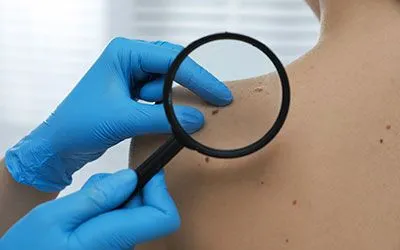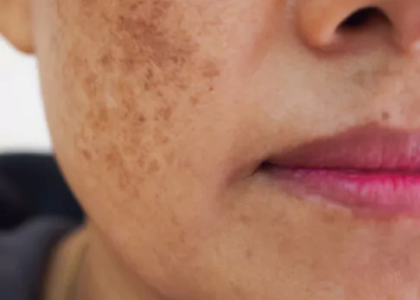How Skin Cancer is Diagnosed: Early Detection and Treatment Options
Skin cancer has become an increasingly common health concern. While the word “cancer” may sound alarming, staying informed and proactive can significantly improve the chances of a successful recovery. Early detection, accurate diagnosis, and timely treatment are essential steps in effectively addressing skin cancer. If you suspect skin cancer, it’s crucial to seek professional medical advice immediately.
Common Signs and Symptoms of Skin Cancer
Understanding the warning signs of skin cancer is the first step toward detecting potential issues early. Here are some of the most common signs to watch for:
- Changing Moles or Growths: Any mole or growth that changes in size, shape, color, or texture should be assessed by a dermatology specialist.
- Dome-Shaped Growths: Skin cancer can appear as raised, dome-shaped growths, which may be firm or tender when touched.
- Scaly Patches: Persistent rough, scaly patches that don’t respond to over-the-counter eczema or psoriasis treatments could be a sign of skin cancer.
- Non-Healing Sores: Sores or lesions that fail to heal over time or heal partially and then recur should be evaluated.
- Discolored Spots or Nail Streaks: Unusual brown, black, or discolored spots on the skin or streaks beneath the nails can be indicators of skin cancer.
Why Self-Examination is Key to Skin Cancer Prevention
Performing regular self-examinations is one of the most effective tools in detecting skin cancer early. Familiarizing yourself with your skin’s normal appearance allows you to identify any changes or abnormalities, which you can then report to your dermatologist for further investigation.
Diagnosing Skin Cancer: The Role of a Skin Biopsy
If a dermatologist suspects skin cancer based on your examination, the next step is typically a skin biopsy. A biopsy is the only definitive way to confirm the presence of skin cancer cells and determine the specific type of skin cancer involved.
Types of Skin Biopsies
Depending on the location, size, and appearance of the suspicious area, your dermatologist may choose one of the following biopsy methods:
- Shave Biopsy: Commonly used for superficial skin lesions, this method removes a thin layer of tissue and usually results in minimal scarring.
- Punch Biopsy: This method is used for deeper or more complex lesions. It involves removing a small, cylindrical sample of skin for further analysis.
- Excisional Biopsy: This type is used when a larger area of tissue needs to be removed, such as when the entire lesion is suspected to be cancerous. Stitches may be required to close the wound.
- Incisional Biopsy: A portion of the lesion is removed for testing. This method is used when the lesion is too large to remove entirely, or when preserving surrounding tissue is important.
What to Expect During a Skin Biopsy
During a skin biopsy, your dermatologist will numb the area with a local anesthetic to minimize discomfort. Once the area is numb, the dermatologist will remove the suspicious tissue sample, which is then sent to a pathology laboratory for examination.
A trained pathologist will examine the biopsy under a microscope to check for abnormal or cancerous cells. This in-depth analysis helps determine not only whether skin cancer is present but also its type, stage, and potential aggressiveness.
Understanding Your Skin Biopsy Results
After the biopsy, the dermatologist will receive a report that outlines the following:
- Confirmation or Exclusion of Skin Cancer: The biopsy will confirm whether cancerous cells are present.
- Type of Skin Cancer: The report will specify whether the cancer is basal cell carcinoma, squamous cell carcinoma, melanoma, or another type.
- Stage and Depth of the Cancer: If cancer is present, the biopsy report will provide information on how deep the cancer has penetrated and its stage.
- Other Tumor Characteristics: The report may also offer insights into the tumor’s behavior, helping your doctor develop an appropriate treatment plan.
Treatment Options for Skin Cancer
The treatment of skin cancer depends on factors such as the type, size, and stage of cancer, as well as the patient’s overall health. Some of the most common skin cancer treatment options include:
1. Skin Cancer Removal
For most cases of skin cancer, surgical removal is the primary treatment method. This can involve:
- Excision: The tumor and some surrounding healthy tissue are cut out.
- Mohs Surgery: A specialized surgical technique that removes the cancerous tissue layer by layer while preserving as much healthy tissue as possible.
2. Skin Cancer Radiation Therapy
If surgery is not an option or the cancer is high-risk, radiation therapy may be recommended. This treatment uses high-energy radiation to target and destroy cancer cells, often after surgery or when surgery alone is insufficient.
3. Topical Therapies for Skin Cancer
In some early-stage or precancerous cases, topical therapies may be used. These include creams, gels, or ointments containing chemotherapeutic or immune-modulating agents designed to treat the affected area.
4. Systemic Therapies
For advanced cases, systemic treatments such as chemotherapy, targeted therapy, or immunotherapy may be recommended. These treatments circulate through the body to target cancer cells, offering a more comprehensive approach when skin cancer has spread or is difficult to treat locally.
Skin Cancer Diagnosis and Treatment at Plastic Surgeon Islamabad.
At Plastic Surgeon Islamabad, we specialize in providing comprehensive care for patients with skin cancer, offering cutting-edge diagnostic tools, including skin biopsies, and a variety of treatment options. Our experienced dermatologists are dedicated to delivering personalized care tailored to each patient’s unique needs.
By staying vigilant, practicing sun protection, and regularly examining your skin, you can greatly reduce your risk of developing skin cancer. With early detection and proper treatment, most cases of skin cancer can be managed successfully.
If you’ve noticed changes in your skin or suspect a potential issue, schedule a consultation with one of our specialists at Plastic Surgeon Islamabad today. Early intervention can make all the difference in your treatment and recovery journey.
This rewrite is optimized for SEO by including relevant keywords such as “skin cancer diagnosis,” “skin cancer treatment,” “biopsy for skin cancer,” and “Plastic Surgeon Islamabad,” ensuring better visibility for search engines.





